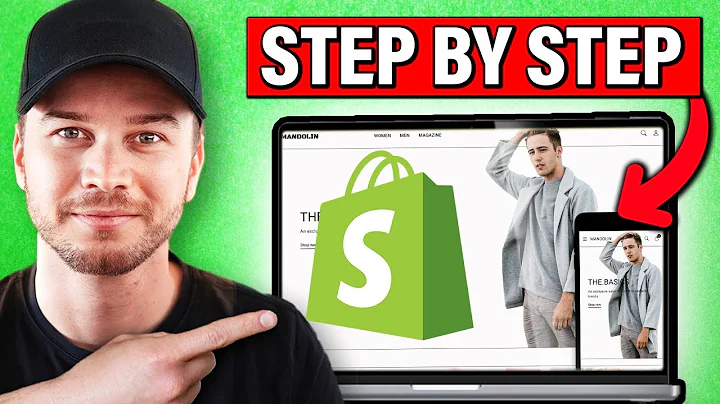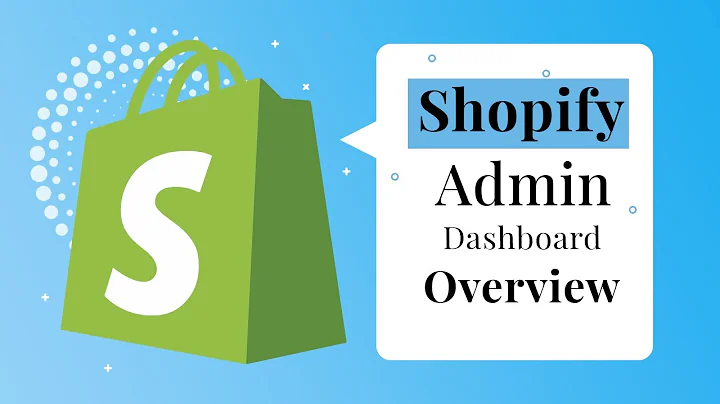Hi everyone, I’m Casey from Shopify.,So, you started your business and now you're
ready to bring products into your store!,I'll teach you how to add a product, and what
information you need to include to help make,sales.,For all the links and videos described in
this video, check out our description below.,Start on the Shopify admin.,Click on “Products”, and then click “Add
product”.,You don’t need to enter every product detail
listed in this video, so you can choose what’s,important for your business.,Next, give your product a name and write a
detailed description.,I’m going to add an exercise ball to our
store.,Descriptions inform and persuade customers
to make a purchase.,If you use a dropshipping service like Oberlo,
it’s best to rewrite the provided description,to fit your brand.,Descriptions also help with search engine
optimization also known as “SEO”.,By adding a description and details, you're
helping your customers find your products,easier.,Next, you can add media files to the product.,You can add them by dragging and dropping
the files, selecting them from your computer,,or by adding a URL.,Visuals help your customers decide if they
want to make a purchase, so it’s best to,have a visual for all of your products.,Now you need to add a price.,This is what customers pay at checkout.,The “Compare at price” is the original
price for a product that’s on sale.,For example, if you enter $30 as the compare
at price and leave the price at $20, the product,displays as $10 off.,Giving a “Compare at price” encourages
customers to purchase your product while it’s,at a lower price.,If this product is not on sale, then you can
leave this field blank.,The “Cost per item” is how much the product
costs you.,If you resell a product, then enter the price
you paid the manufacturer, excluding taxes,,shipping, or other costs.,Or, If you create the product yourself, then
enter a value that is based on your labour,and material costs.,This helps you calculate sales profits, generate
reports, and see statistics about your products.,Click “Charge tax on this product” if
the product is taxable.,Under the inventory column, you see “Inventory
managed by”.,Select “Shopify” if you manage the inventory.,If you use a third party app to manage the
inventory, then you can select that option,here.,The “Stock keeping unit”, also known as
a SKU, is a unique value for the product.,SKUs help you organize your inventory and
fulfill orders.,If you use SKUs, then enter the unit here.,You also see an option here to enter a barcode.,Some sales channels, like Google or Amazon,
require a barcode before your product can,be published.,When “Track quantity” is checked, the
Shopify admin tracks inventory for this product.,If you don’t check this box, then the quantity
option is not available.,If you only have a specific amount of stock,
then it’s important to track inventory so,you don’t sell out of an item.,You can also choose to select “Continue
selling when out of stock”.,Only select this if you can keep up with demand
and will have inventory shortly.,Next, enter the number of units in stock under
“Quantity”.,If you have one business location, then your
inventory layout looks slightly different.,Uncheck the “Track quantity” box if you
aren’t tracking inventory.,Otherwise, enter individual quantity numbers
for this product at each location where it’s,available.,Under shipping, select “This is a physical
product” if this is an item that needs to,be shipped.,Uncheck it for digital products or services,
or for products that you never ship.,Now, enter the product's weight.,This field only appears when “This is a
physical product” is checked.,Product weight needs to be accurate because
it’s used to calculate shipping rates.,You can select between different measurements
such as pounds, ounces, kilograms, and grams.,If you want to ship the product internationally
with Shopify Shipping, also known as selling,cross-border, then you need to enter the Customs
Information for Country or Region of origin.,Having a shipping strategy is very important
for your business.,For more information on shipping, check out
the link in our description below.,Next, enter the harmonized system code.,If you’re not sure what it is, then you
can start typing in your product in the search,field to look for an HS code.,Select “This product has multiple options,
like different sizes or colors” if this,applies.,Each product option is known as a “variant”.,For example, if I sell this exercise ball
in size 55 centimeters and 65 centimeters,,then each size is a “variant”.,Under “Options”, enter a title for the
option name.,In the blank field next to it, enter the different
variants available by separating each one,by a comma.,Continue to add options for other variants
by clicking the “Add another option” button,until finished.,After you finish entering the variants, you
can see the different variants and their locations,under “PREVIEW”.,The “Search engine listing preview” is
a preview of how your product appears in search,engine results, like Google.,Click “Edit website SEO” to make changes
to the preview.,Now, scroll back at the top.,On the right side you see “SALES CHANNELS
AND APPS”.,Sales channels are the different platforms
where you sell your products.,Select the checkbox for the channels where
you want this product to be available.,I’m going to sell this on our Online Store
and Point of Sale so I need to have these,two boxes checked.,Under “Organization”, you see “Product
type.”,This is a category for the product.,You can use the product type as a condition
for an automated collection, or to filter,products in the Shopify admin.,A product can have only one product type.,You can use a product type already made or
create a new one.,To create a new product type, enter it into
the “Product type” field.,The “Vendor” is the manufacturer, wholesaler,
or seller for the product.,If you created this product yourself, then
enter your business name, or, if you want,,you can leave it blank.,If you work with a lot of different manufacturers,
this can be useful to organize your products.,You can also add the product directly to a
collection.,“Collections” group your products and
make it easier for customers to find them,on your online store.,Use the “COLLECTIONS” field to add the
product directly to a manual collection.,In this example, the exercise ball product
is a part of the “Athletic Accessories”,collection of AlyAthletics.,Finally, “TAGS” are searchable keywords
associated with your product.,Tags help customers find your product through
your online store search, and you can also,use them to create automated collections.,I want customers to see this product whenever
they search for the words “exercise” or,“ball” on my store, so I use those as
tags.Review the details you entered and when,you’re ready for this product to appear
on your store, select “active” under “Product,status” at the top of the page.,If your store is live, then active products
will be on your store for customers to buy.,If you’re not ready for this item to appear
on your online store, then select “draft”.,Products are saved automatically in “draft”
mode until you make them active.,Lastly, click “Save”.,Now your product is now added to the Shopify
admin!,Now you know how to add a product with all
of the essential details.,For more videos on getting started with Shopify,
subscribe now!,Don’t forget to visit help.shopify.com for
more information.
Congratulation! You bave finally finished reading youtube how to upload product on shopify and believe you bave enougb understending youtube how to upload product on shopify
Come on and read the rest of the article!
 3.5K Ratings
3.5K Ratings
 WHY YOU SHOULD CHOOSE TTHUNT
WHY YOU SHOULD CHOOSE TTHUNT




